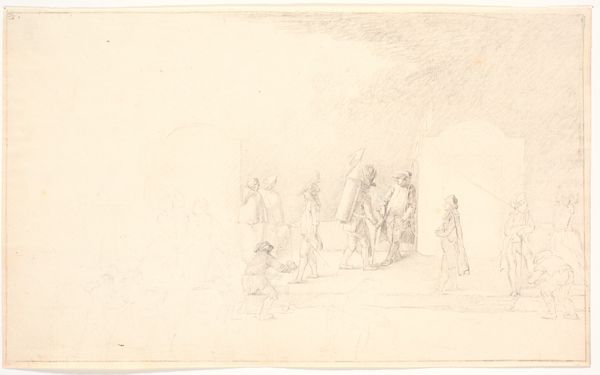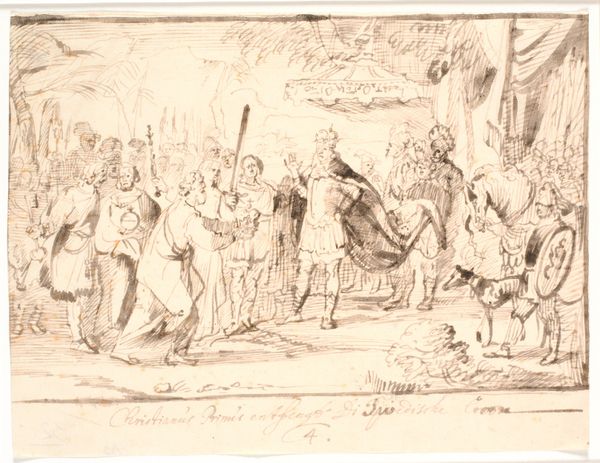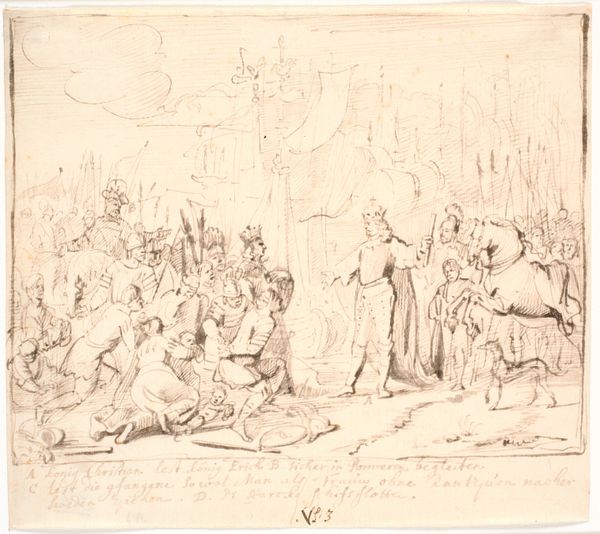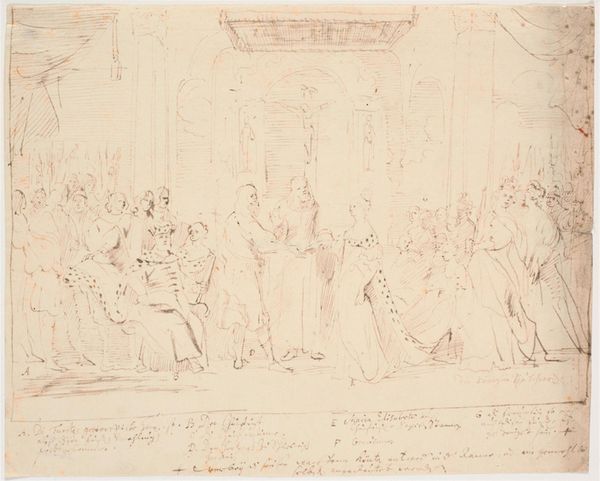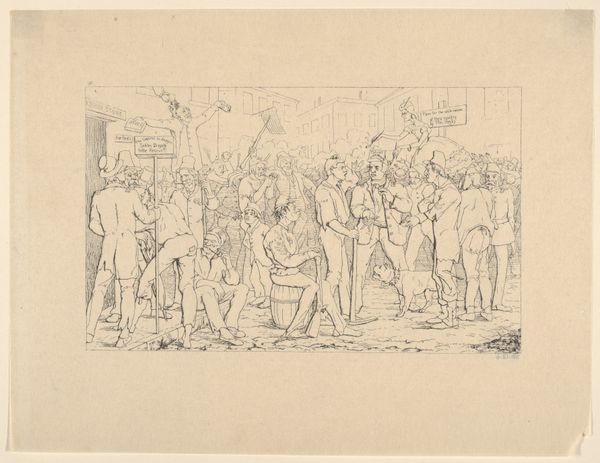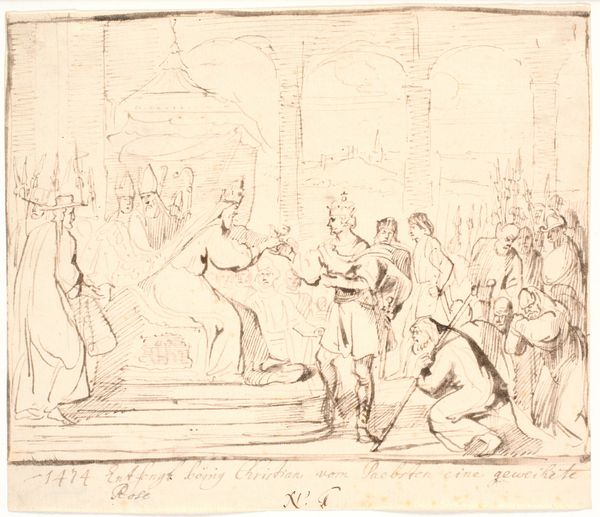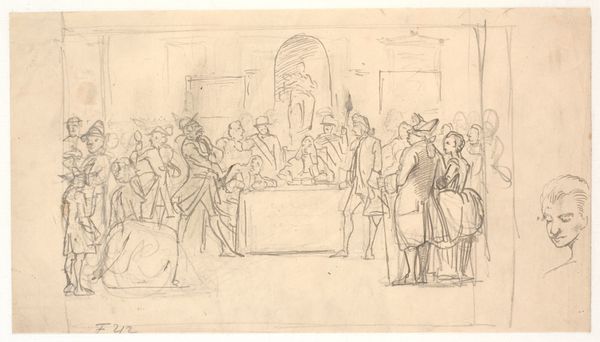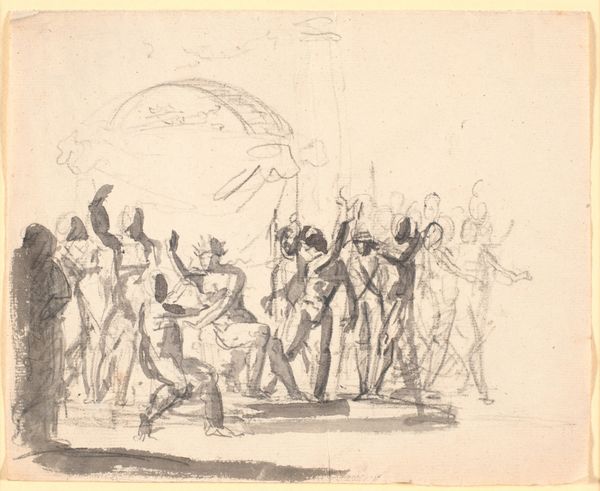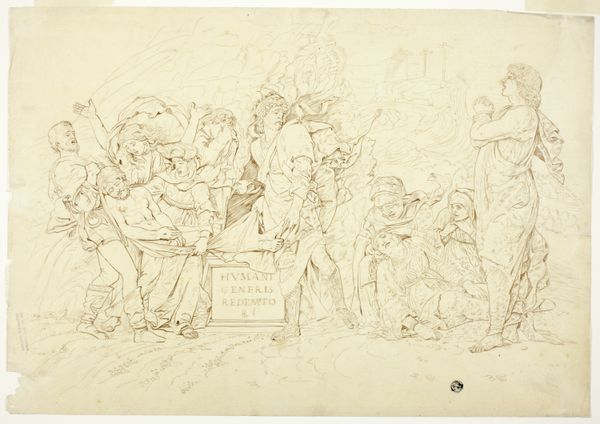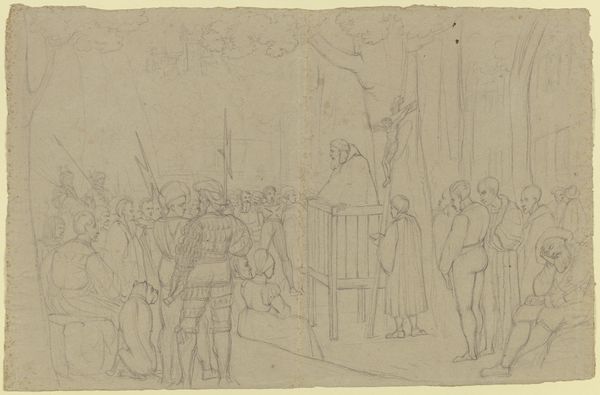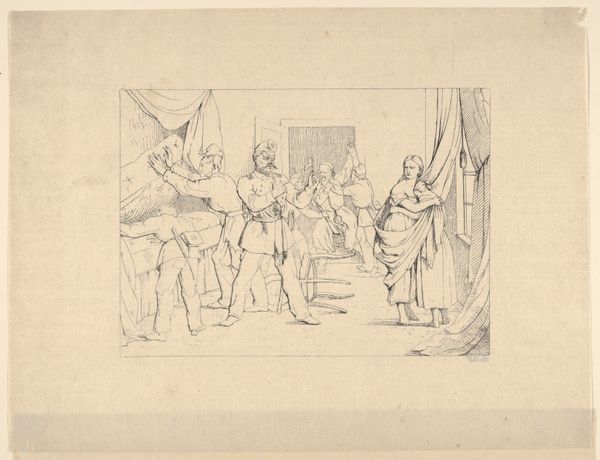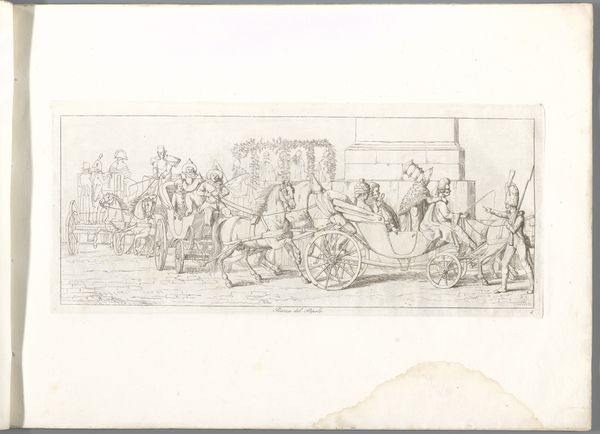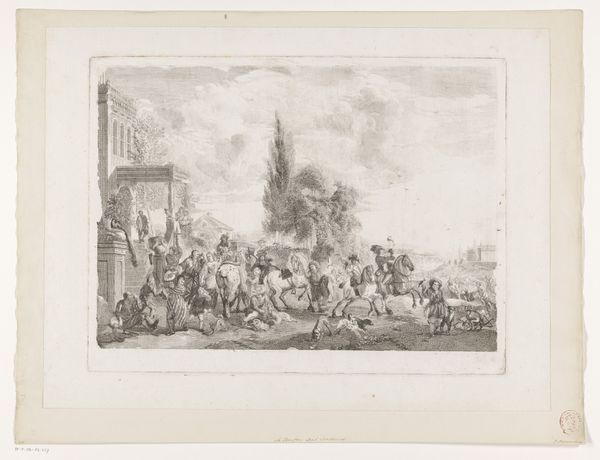
Hertug Frederik III af Gottorp modtager 11. august 1639 et persisk gesandtskab. 1639
0:00
0:00
drawing, ink
#
drawing
#
ink drawing
#
narrative-art
#
baroque
#
etching
#
ink
#
history-painting
Dimensions: 179 mm (height) x 238 mm (width) (bladmaal)
Editor: This ink drawing by Jürgen Ovens, from 1639, depicts "Hertug Frederik III af Gottorp modtager 11. august 1639 et persisk gesandtskab"—Duke Frederik III of Gottorp receiving a Persian embassy on August 11, 1639. It's such a formal and staged scene, all these figures meticulously arranged. What's your take on this, seeing it today? Curator: It’s more than just a formal scene. Ovens captured a moment fraught with cultural tension and power dynamics. The very act of depicting this reception normalizes and celebrates the Duke's authority through this encounter. What does it mean for a European power to stage and commemorate its interaction with a non-European culture in this way? Editor: So, it's not simply recording an event but also making a statement about the Duke’s power? How would an audience have viewed this interaction between these groups in the 17th century? Curator: Exactly. It places the Duke in a position of dominance, a critical commentary on early modern globalization and the inherent power imbalances between Europe and other regions. Think about the composition – who occupies the higher ground, who is kneeling, who is standing. Editor: Now I see how carefully it’s constructed to communicate power. The Duke is elevated, literally looking down. Were images like these circulated widely? Curator: Drawings such as this one often served as preparatory studies for engravings, which allowed for broader dissemination. The artist and patron actively shape not just a historical record, but also contemporary and future perspectives on these encounters, thus reinforcing the dominant narrative. Do you think that changes our experience of the work, knowing this? Editor: Definitely. It highlights how images, even seemingly straightforward depictions, are tools that communicate the values of their time. It feels relevant to think about it this way, even now. Curator: Precisely! Art helps us critically examine how the past continues to shape our present. That kind of work is always worth doing.
Comments
No comments
Be the first to comment and join the conversation on the ultimate creative platform.
